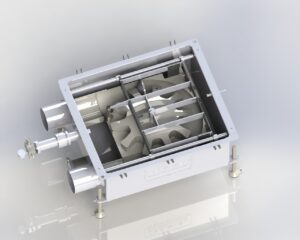In the bustling rhythm of our daily lives, coffee stands as a ubiquitous companion, fueling our energy and sparking our senses. From the mysterious discovery by a monk in the hills of Ethiopia to the intricate web of global trade, our journey explores the evolution of the coffee bean industry. Join us on a journey through time and taste in the captivating world of this amazing beverage and its industry.
Explore the Phenomenon of Coffee’s Cultural Impact and Caffeinated Allure
With over 2.25 billion cups consumed globally each day, coffee has transcended its origins in Ethiopia to become the world’s second most traded commodity, surpassed only by oil. Such a huge coffee culture today may have something to do with the caffeine it contains.
Caffeine is the most popular nootropic, and it is stimulating, providing clarity and a boost of energy. It is also addictive, but this addiction has little or no obvious consequence in most people, which is why there’s no stigma against its consumption. Today, there are countless varieties of beans, roasts, and styles of this beverage – black coffee, espresso, coffee with cream, and cappuccino.
The Beginnings of the Coffee Bean Industry
The very first mentions of coffee (as with any other food that has been around for centuries) are found in various stories and legends. Since coffee originated in Ethiopia, one Ethiopian legend says that coffee was discovered by Kaldi, a monk and goat herder who found his goats full of energy and frolicking after eating the fruit of the coffee shrub. When he tasted the fruit, he experienced a similar reaction, so he took the fruit to his fellow monks, who also spent the night alert and awake after eating it.
Coffee’s Journey From Arabian Discovery to the Rise of Coffee Houses in the Near East
The word of this strange fruit moved east, and coffee eventually reached the Arabian Peninsula, where people began cultivating and trading it. This commenced a voyage that would see coffee beans traversing the globe. The Arabs called it qahwa, which means wine in Arabic.
In the 15th century, coffee cultivation had taken root in the Yemeni district, and by the 16th century, it had become a widespread phenomenon in Syria, Turkey, Egypt, and Persia. People used to enjoy it at home and in coffee houses (qahveh khaneh in Farsi), which began to appear in many cities across the Near East.
These coffee houses evolved into significant hubs for social activities, where patrons immersed themselves in conversations, enjoyed performances, listened to music, stayed informed about current events, and even engaged in strategic games like chess. This cultural amalgamation transformed the coffee house into a vital center for the exchange of information.

The Evolution of the Coffee Bean Industry – From Arabia and Into the World
The demand for coffee continued to spread, and the competition to cultivate it outside of Arabia also kept growing. In the second half of the 17th century, the Dutch acquired coffee seeds and coffee seedlings and then tried to plant them in India. These first attempts failed, but their efforts in Indonesia (Batavia, the Island of Java) were successful, which launched their coffee trade. Then, they expanded their business to the islands of Celebes and Sumatra.
Subsequently, the French initiated coffee cultivation in the Caribbean, the Portuguese in Brazil, and the Spanish in Central America. In the early 18th century, the coffee plant made its way to the New World. However, its popularity did not surge until significant historical events, such as the Boston Tea Party in 1773 and the American Revolution, prompted a shift from tea to coffee. The demand for coffee further rose during the American Civil War and other conflicts as soldiers turned to caffeine for its energizing effects.
The Rise of Specialty Coffee and Independent Cafés in the Late 20th Century
By the late 19th century, coffee had become a global commodity. In the mid-20th century, the awareness of specialty coffee began to grow, especially after the first tubular conveyor was made. Fast forward to today, the coffee movement keeps growing as we are witnessing the sprouting of numerous small, independently-owned cafés that boast locally roasted, sustainable-trade beans. The “wine of Araby” has become a trade that’s valued for its complexity of flavors.
Vacuum Packaging and Instant Coffee With the Best Conveyor Solutions
Vacuum packaging is probably the most important innovation that came from the founders of Hills Bros. Coffee (R.W. and Austin Hills). They invented the vacuum packaging process that removes air from coffee tins. This resulted in fresher beans and changed the way coffee processors would package coffee to this day.
However, before beans get to the tin, they must go through manufacturing conveyor systems. So, if you want your fragile beans to get in one piece, choose the top-notch industrial conveyor systems that will suit your needs the best.

There Are Three Waves of Coffee Industry
The Third Wave of coffee is the current wave of specialty coffee, which is appreciated as a craft or artisan beverage. In all of its processes, it is treated with the same relevance as craft beer or fine wine. To understand the importance of the Third Wave, we will take a look at the previous wave movements.
First Wave of Coffee – Innovations and Critiques in 19th and 20th Century
The first wave of coffee dates back to the 19th century when entrepreneurs saw business opportunities in the coffee market. The market was affordable and ready for the pot, and coffee brands like Maxwell House and Folgers quickly became household names across the US.
When it comes to quality and taste, the first wave is criticized for sacrificing these to promote mass production and convenience. However, the innovations in processing and packaging allowed the coffee industry to skyrocket.
- Mid-19th Century
The Pioneer Steam Coffee and Spice Mills company initiated the production of pre-roasted ground coffee conveniently packaged in small tins. Formerly regarded as a luxury for the upper class, the company played a pivotal role in making coffee accessible to the broader population through mass production.
- Early 20th Century
The coffee industry continued to innovate and create products that were both convenient to use and time-saving. The dehydration process that was applied for soluble tea was applied to coffee, and that was the first patent for instant coffee (1903). Instant coffee didn’t require brewing equipment and was quick and easy, and Nestlé even supplied the US military for the Second World War. By the 1970s, about a third of imported roasted coffee was used for instant coffee production.
- Late 20th Century
Another invention of the First Wave of Coffee was the invention of the automatic drip coffee maker. It was invented by Vincent Marotta, who called his new coffee maker – Mr. Coffee. By the end of the 1970s, more than 40,000 of these coffee makers were being sold daily.
Second Wave of Coffee Brings the Specialty Coffee Beans
The reaction to the poor quality of the coffee was the main driver of the transition into the Second Wave. Coffee lovers wanted to know the origins of coffee and coffee blends, along with understanding all the roasting styles of what is today called specialty coffee beans. Adding this knowledge to the enjoyment of this beverage led to creating a whole experience around coffee.
The term specialty coffee was coined by the late Ema Knutsen, also known as the “godmother of specialty coffee.” Since the 1970s, after founding Knutsen Coffees, Ltd. and becoming the first female coffee broker in the US, she ceaselessly advocated for the identity, quality, and distinction of coffee. She was recognized by the SCAA (now SCA) twice – she was the first person to receive the SCAA Lifetime Achievement Award (1991) and was honored as a founder of the specialty coffee industry (2014).
In 1971, the first Starbucks opened in Seattle, and they served fresh-roasted coffee beans. However, Starbucks’ Director of Marketing, Howard Schultz, tried to convince the owners to start selling brewed coffee drinks, but he was unsuccessful. After he founded his own coffee chain (Il Giornale Coffee), he came back to purchase Starbucks, which is when lattes, espressos, and pre-ground coffee found their way onto Starbucks’ menu. In the 1990s, the new coffee chain was opening a new location every workday and had over 3,000 locations by the year 2000.
The entrepreneurs of this wave began following the Starbucks model, and the social experience of consuming coffee grew to become more important than the artisan coffee production process. Forsaking the coffee bean source for the social experience was the criticism of the Second Wave. When describing the Second Wave of Coffee, Starbucks is the business most often used to illustrate how coffee shops became big businesses that started luring consumers to their brick-and-mortar shops to drink coffee.

Third Wave of Coffee Focuses on the Characteristics of Coffee
This wave began in 2002, so there is not much history to talk about. It is the current mainstream wave that represents the movement, and it is characterized by people interested in the characteristics of coffee. It is more of a reaction to the way bad coffee is being promoted – social influences and marketing are not the driving force of the Third Wave growth.
Roast Magazine and the Sprudge blog are great examples of valuable sources of news and information about the coffee industry that third-wave coffee vendors seek. They address the business, science, and art of coffee by covering the issues that are highly important to the coffee industry. With the third wave, the product takes center stage, while the marketing and production take the back seat, and there is a new emphasis on transparency within the coffee industry. Coffee lovers can trace their favorite coffee’s origins to the farm where it was harvested.
Why Cablevey Conveyors Are the Best Option for Your Manufacturing?
The coffee bean industry is vast and in constant flux, making it almost impossible to note all the current best practices within a coffee processing facility. When growing their operations, coffee roasters need to implement different technological solutions, such as automated conveyor systems, to meet their needs.
Furthermore, today’s standards regarding coffee quality and packaging are growing, making factors such as product loss, cross-contamination, foreign material contamination, bean breakage, and product segregation increasingly important.
If you’re looking for an automatic conveyor system, Cablevey’s tubular cable and disc conveyors are designed to meet the needs of every modern coffee processing facility. From conveyor installation supervision to cleaning conveyor belts, Cablevey ensures a comprehensive solution to uphold the high standards of the coffee industry.

Use Cablevey Tubular Conveying System for Your Manufacturing Needs
Elevate your efficiency, minimize product loss, and maintain the highest standards of quality with one of the top-notch conveyor technologies Cablevey has to offer. We’ll ensure a smooth and optimized manufacturing process. For a transformative conveyor experience, contact Cablevey Conveyors today and revolutionize your manufacturing journey.






